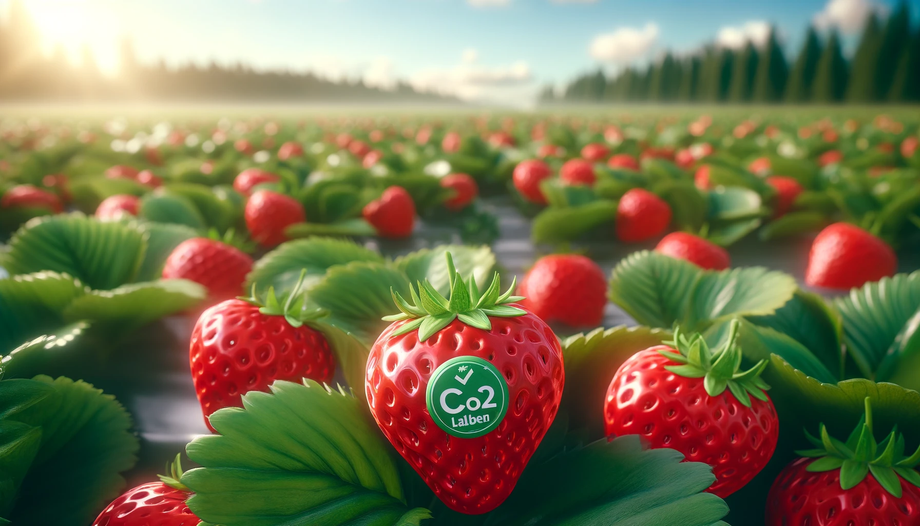This is an AI translated post.
Carbon Labels Attached to Japanese Strawberries… Efforts to Reduce CO2 Emissions
- Writing language: Korean
- •
-
Base country: Japan
- •
- Others
Select Language
Summarized by durumis AI
- Carbon labels have been attached to strawberries produced at a leisure farm in Nagano Prefecture, marking the first time carbon labels have been introduced for strawberries in Japan.
- The Nagano Agricultural Improvement Center is responsible for attaching the carbon labels and aims to reduce CO2 emissions through measures such as rationalization of fertilizer management and improvement of operational efficiency.
- The Nagano Agricultural Improvement Center emphasized that by encouraging consumers to purchase products with carbon labels, they will contribute to reducing greenhouse gas emissions.
The Ministry of Agriculture, Forestry and Fisheries of Japan announced on the 6th that a "carbon label" has been attached to strawberries produced at a leisure farm in southern central Nagano Prefecture, indicating the amount of carbon dioxide (CO2) emissions from the procurement of raw materials to the disposal stage. This is the first case of a carbon label being attached to Japanese strawberries.

Image source: GPT4.0
The Nagano Agricultural Experiment Station is responsible for attaching the carbon label and will continue to support this farm in the future, inviting experts to help rationalize fertilizer management, improve operational efficiency, and so on. Through these efforts, they aim to reduce CO2 emissions.
The Nagano Agricultural Experiment Station calculated the "carbon footprint" of 400g plastic cases of strawberries produced at the "Taichi Eco-Rest Farm", a leisure farm. Using the standards announced by the Ministry of the Environment, the total CO2 emissions were estimated at 1.1kg.
Breaking down the emissions by stage, the "raw material procurement stage", which includes seed production and transportation, field preparation, cultivation, and harvesting, accounted for the highest proportion of emissions, at approximately 69% of the total. Among these stages, emissions from fertilizer, automatic irrigation systems, and seed-related processes were particularly high.
The Nagano Agricultural Experiment Station emphasized that by encouraging more companies and manufacturers to produce products with lower CO2 emissions, they will encourage consumers to purchase products with carbon labels, contributing to the reduction of greenhouse gas emissions.
Meanwhile, maintaining the appropriate temperature during the low-temperature period is essential for strawberry cultivation. The Japan Agricultural Experiment Station conducted experiments on planting date delay cultivation and appropriate temperature treatments to enhance low-temperature tolerance, depending on the variety. The results showed that the variety "Beautiful" showed good growth and yield when planted on November 20th and grown at 15℃.
In experiments on the melon variety "Ibaraking" for high-density cultivation, the best fruit quality and yield were obtained when the number of fruit setting was 17-19, the daytime temperature was 32℃, and the nighttime temperature was 25℃. On the other hand, for stable cultivation of Chinese cabbage during the high-temperature and humid season, the optimal conditions were confirmed to be a planting density of 40×30cm, tunnel + windbreak net covering, 25℃ daytime temperature, and 20℃ nighttime temperature.
In experiments on high-yield cultivation of upland field crops, the rice variety "Hanchalbye", the soybean variety "Geumgangkong", and the potato variety "Desire" showed good yields at planting densities of 30×15cm, 60×20cm, and 60×30cm, respectively. For high-yield cultivation in response to climate change, the rice variety "Saenuri", the wheat variety "Saehanmil", and the barley variety "Saehanbori" were used, with appropriate planting densities of 30×15cm for rice and 15×10cm for wheat and barley.
Through these studies on varieties and cultivation techniques, the Agricultural Experiment Station is continuously improving the crop production environment and technology, striving for sustainable high-quality and high-yield cultivation.








